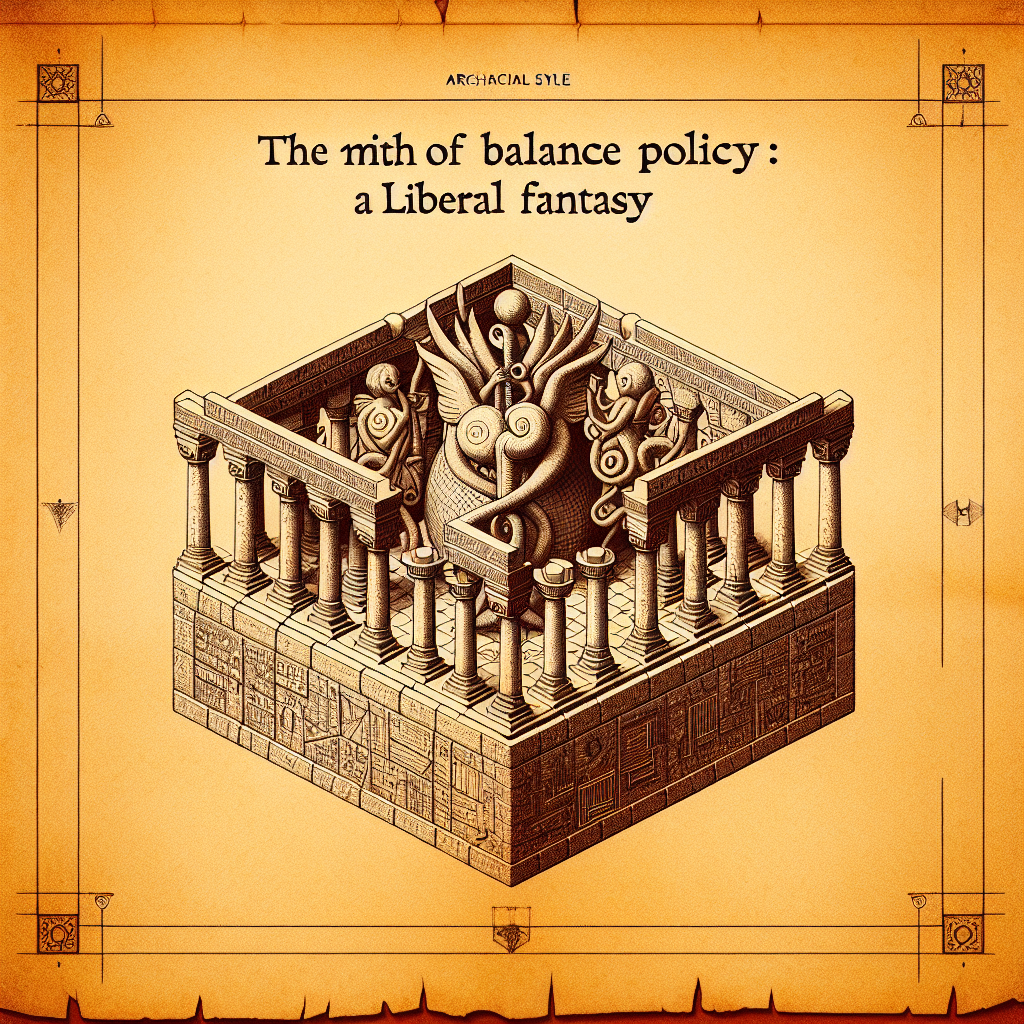A juggler doesn't solely rely on talent; they implement a system to ensure each ball remains in flight without colliding. In much the same way, businesses and organizations employ a 'Balance Policy'. The term 'Balance Policy' may sound like abstract corporate jargon, but it's both central and surprisingly straightforward. What it means, and why it's critical, often unfolds in the complex realms of economics, business management, and sustainability strategies. In a world that's ceaselessly in motion, balance policy frameworks guide everything from financial portfolios to ecological footprints, ensuring harmony and growth.
The Essence of Balance Policy
Who: Primarily applied by financial analysts, business managers, policymakers, and sustainability advocates, balance policies are designed for anyone responsible for managing systems where resources, risks, and responsibilities need equanimity.
What: At its core, a balance policy is a strategic framework that aids organizations in maintaining equilibrium between conflicting goals or scarce resources. Think along the lines of maintaining a balanced diet, only here we're balancing books or emotional investments instead!
When: Balance policies are not placeholders for an emergency action plan. Instead, they are continuously revised guidelines to adapt to shifting dynamics, implemented during strategic planning and regularly evaluated.
Where: Balance policies find application across diverse sectors, from corporate boardrooms and public policy forums to environmental management agencies and even educational institutions.
Why: So, why adopt a balance policy? Because without it, the delicate acts of juggling priorities, whether in fiscal quarters or ecological preservation, could go awry, leading to crises or missed opportunities.
Practical Applications of Balance Policy
Imagine you are the CFO of a burgeoning tech startup, eager to scale new heights. Your resources — both human and financial — are finite. Pouring all efforts into developing the next breakthrough may leave marketing and operations dry. A balance policy here ensures you allocate enough juice for innovation while powering continuous improvement and market reach.
In ecological terms, think about the delicate balance involved in sustainable agriculture. Farmers must balance their use of land, water, and energy with the demand for higher agricultural yields. Balance policies account for these variables, promoting a sustainable future while meeting immediate needs.
How Does Balance Affect Business Decisions?
The implications of a balance policy seep into every decision-making crevice within organizations. From financial strategies that prevent the over-leveraging of investments to HR policies that foster diversity while maintaining performance excellence, balance policies are the unsung orchestral conductors.
Consider risk management, a domain virtually synonymous with balance. Here, the balance policy could involve spreading investments across various assets that don’t correlate directly, an approach famously known as diversification. This method ensures that no single adverse event can wipe out your financial standing.
Formulating Effective Balance Policies
Creating a robust balance policy is akin to architectural planning — meticulous, comprehensible, and actionable. Here’s a high-level overview of the process:
Identify Objectives: Outline short-term and long-term goals independently. Understanding what needs balancing eventually sets the course.
Assess Resources and Constraints: Whether it's assets, time, or human potential, knowing what you have versus what you need is stepping into the sunlight after a storm.
Predict Potential Fluctuations and Risks: Anticipate market changes, technological disruptions, or socio-political climates that could shift the balance.
Implement Checks and Changes: Deploy the machinery — think monitoring tools, performance indicators, feedback loops — that signals when there’s a tilt in balance.
Review and Revise: Remember, frameworks are not etched in stone. Continually adapt and realign priorities, much like updating software.
Balancing for Sustainability
Interestingly, the concept of balance policies transcends profit charts and start-ups, making impactful inroads into environmental governance. Sustainability initiatives fundamentally rely on balance policies to harmonize human activities with nature's capacity to rejuvenate. Whether it's reducing carbon footprints, managing waste, or conserving biodiversity, balance policies are crucial in addressing climatic adversities.
Lessons from Balance Policy Failures
Now for an optimistic twist — examining past failures in balance policies can illuminate paths to success. Consider the 2008 financial collapse, characterized partly by a collective failure to balance against rampant speculative risks. Lessons learned have since informed financial regulations worldwide, resulting in improved stability and more resilient banking systems.
Conclusion
The ultimate goal of a balance policy isn't stagnation but dynamic equilibrium — akin to riding a bicycle and maintaining momentum without tipping over. In essence, balance policies aren't merely about avoiding excess; they're about embracing the full spectrum of potential to foster growth, resilience, and innovation.
The exciting part? Each balance policy devised plants seeds for a future where human ingenuity and communal responsibilities coalesce seamlessly. It's an ongoing dance with learning curves and discoveries marking the steps, showcasing human potential at its finest.

